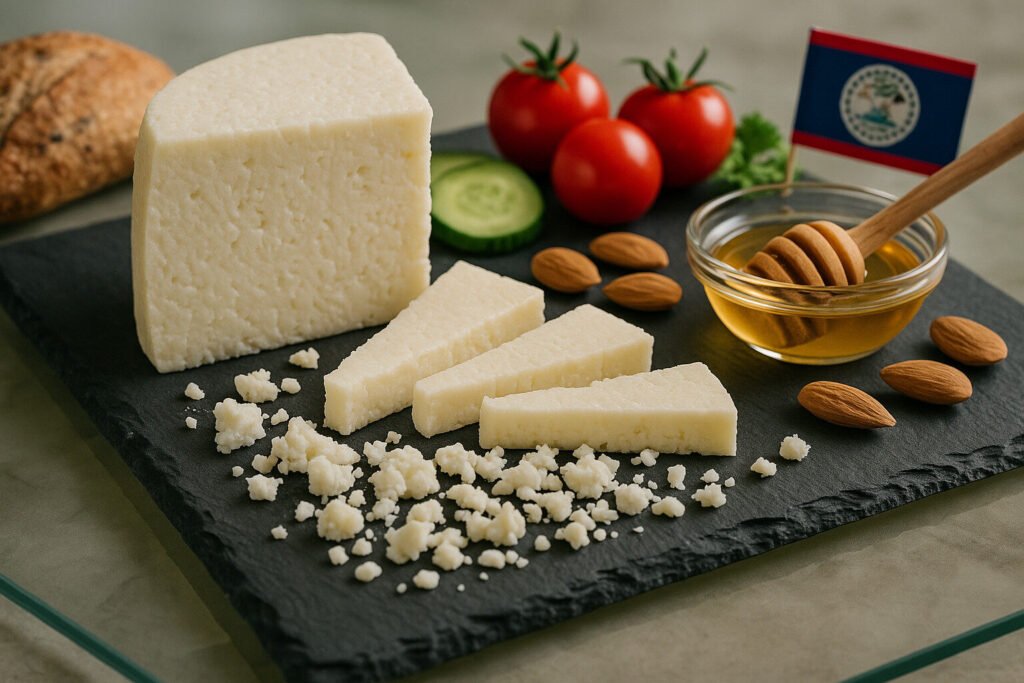Cheese Of Belize
Definition and Scope
Belize cheese refers to a category of fresh, unripened cheeses produced in Belize. These cheeses are typically made from cow’s milk and have a high moisture content. They belong to the broader family of Latin American fresh cheeses, sharing similarities with queso fresco.
This cheese style is characterized by its mild, milky flavor and soft, crumbly texture. It is consumed shortly after production and does not undergo aging. Belize cheese serves as a staple in local cuisine and everyday meals.
Production Process
Belize cheese production begins with pasteurized cow’s milk heated to a specific temperature. Acidification occurs through the addition of food-grade acids like vinegar or citrus juice. This process causes the milk proteins to coagulate and form curds.
The curds are then drained in molds without pressing to retain moisture. No aging or culturing is involved, resulting in a fresh product. The entire process from milk to finished cheese typically completes within one day.
Sensory Profile
Belize cheese offers a clean, mild dairy flavor with slight tanginess from acidification. Its aroma is fresh and milky without complex fermented notes. The cheese lacks the sharpness or funkiness associated with aged varieties.
Texture-wise, it is moist and crumbly yet firm enough to slice. When heated, it softens but does not melt extensively like mozzarella. The white color and simple flavor profile make it versatile for various dishes.
Culinary Uses
In Belizean cuisine, this cheese is commonly crumbled over beans, rice, and salads. It serves as a topping for garnachas, panades, and other traditional street foods. The mild flavor complements rather than dominates other ingredients.
It can be pan-fried to create a crispy exterior while maintaining a soft interior. Unlike melting cheeses, it holds its shape reasonably well when cooked. Belize cheese is rarely eaten alone but rather as a component in composed dishes.
Regional Context
Belize cheese represents an adaptation of Spanish queso fresco techniques to local ingredients and tastes. It reflects the Central American tradition of fresh cheese production using simple, readily available methods. Similar cheeses appear throughout neighboring countries with minor variations.
Production remains primarily small-scale and local rather than industrial. The cheese forms part of the culinary identity connecting Belize to broader Mesoamerican food traditions. It demonstrates how basic cheesemaking methods evolve within specific cultural contexts.






